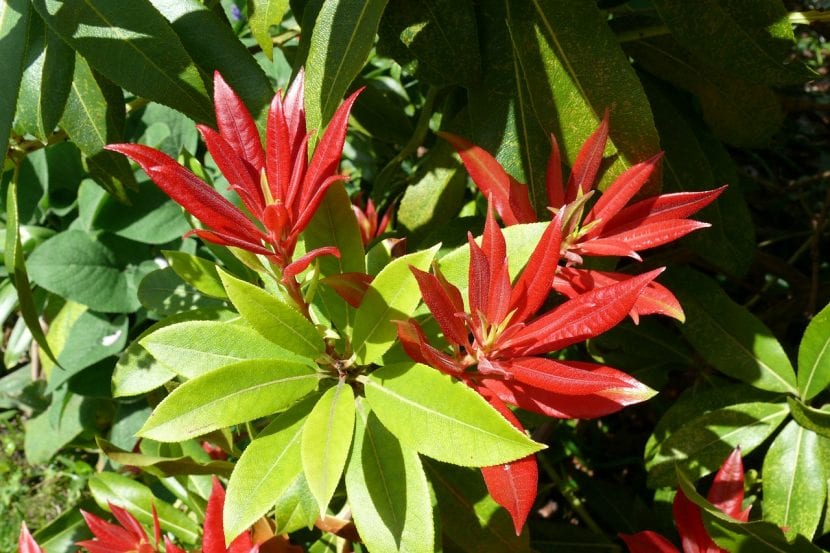
There are some shrubs that, in appearance, look like ordinary plants, without any attraction, but when you look at the color of their new leaves or the beauty of their flowers, they make you change your mind completely. One such curious species is the Pieris japonica.
The ornamental value of this plant is reflected in its foliage, in its hanging clusters of flowers, and even in its elegance. In addition, its adult size is ideal to be grown in small, medium or large gardens, and also adapts very well to living in pots.
Origin and characteristics of Pieris japonica
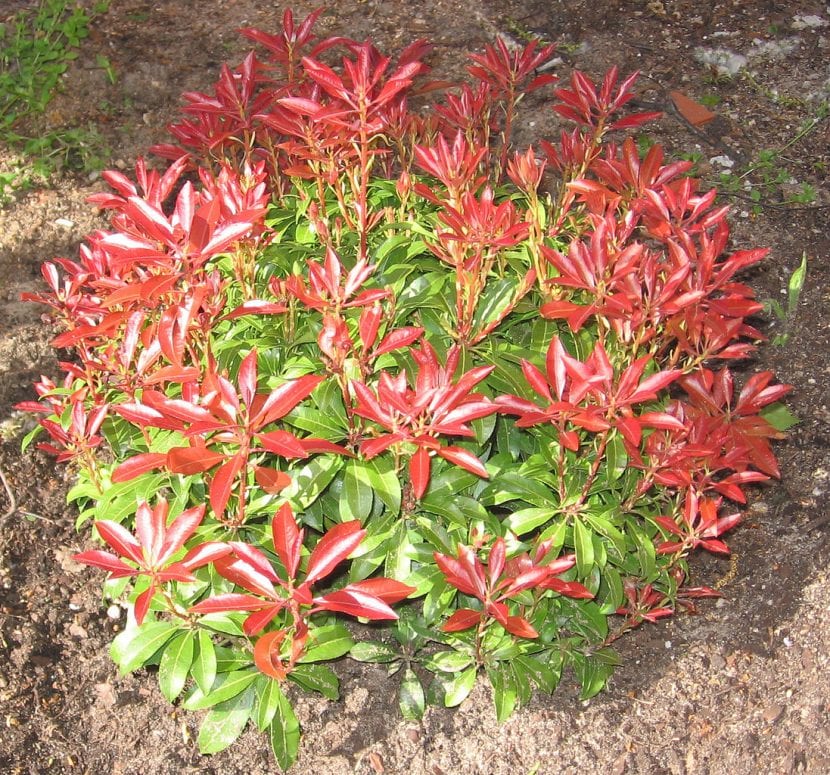
La Pieris japonica, known as pieris or andromeda, is an evergreen shrub (rarely tree) native to the mountains of eastern China, Taiwan, and Japan. It can reach a maximum height of 10 meters, but the normal thing is that it does not exceed 3 meters.
The leaves are light-green on the upper surface and bluish or white on the underside; the newer ones can be bronze in color. It blooms in spring. The flowers are grouped in hanging inflorescences and are white or pink in color.
What are the care it requires?
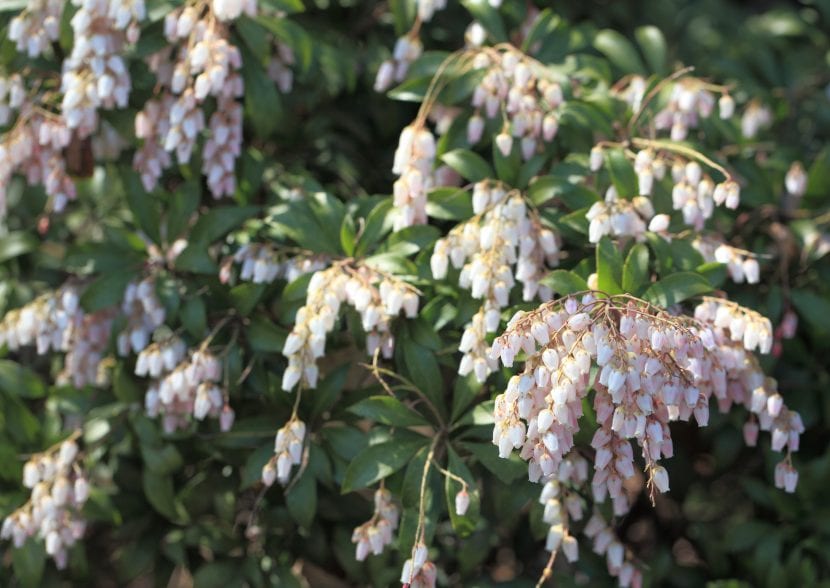
If you would like to have a copy and you want to provide it with care that will allow you to enjoy it for many years, we invite you to follow our advice 🙂:
Location
La Pieris japonica it is a mountain plant, so it is important that it is placed outside. Place it or plant it in an area where it does not get direct sunlight at any time to prevent its leaves from burning.
Earth
- Flower pot: to be filled with substrate for acidic plants (for sale here), since if the pH is high (higher than 6.5) it would have iron chlorosis.
- Garden: the soil must be acidic, rich in organic matter and well drained.
Irrigation
It is very, very necessary to control the risks, since it is very sensitive to flooding. Therefore, it is best to check the humidity of the soil before proceeding to water, either with a thin wooden stick or with a digital meter, in this way, it will be much more difficult for its roots to suffocate.
Always use rainwater or lime-free water. In the event that the one you have is of a pH greater than 6.5, which happens for example in many parts of the Mediterranean region, dilute the juice of half a lemon in a liter of water, or two tablespoons in 5l / water. Check the pH to make sure it does not drop too low, with pH strips that are sold in pharmacies or here.
Subscriber
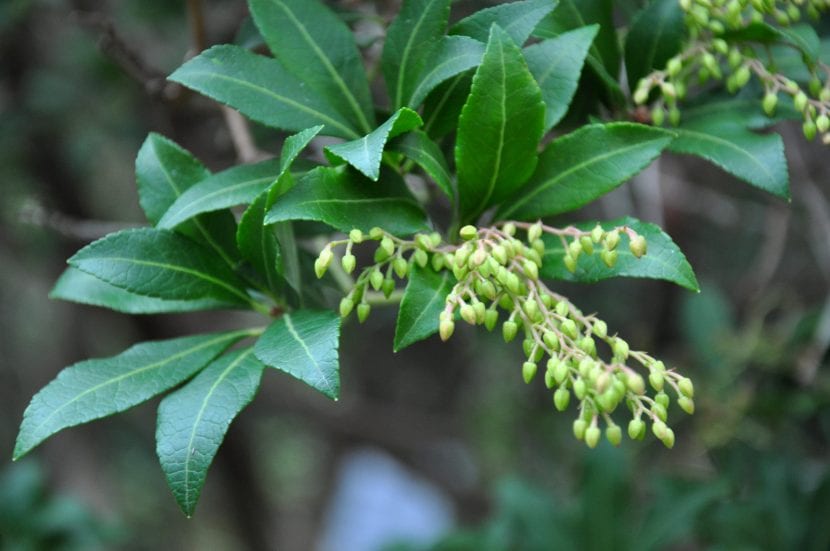
Image - Wikimedia / Lazaregagnidze
During the growing months (from spring to autumn) it is interesting to fertilize the andromeda plant with a specific fertilizer for acid plants following the indications specified on the package. You can find this subscription for sale here.
Pruning
Don't need it, but if you want to keep it as a shrub, trim its stems at the end of winter with a small hand saw (for sale here) or with pruning shears as needed.
Multiplication
It multiplies by seeds in winter, following this step by step:
Phase 1 - Stratification
- First, a tupperware is filled with vermiculite previously moistened with water, avoiding puddling.
- Afterwards, the seeds are sown and sprinkled with a little sulfur. This will prevent the appearance of fungi.
- Then they are covered with a layer of vermiculite.
- Finally, the tupperware is covered and placed in the fridge, in the section for dairy products, eggs, etc.
Once a week and for three months, you have to take the tupperware out of the fridge to renew the air, check the humidity of the soil and to know if the seeds have germinated or not. If they germinate, the stratification will end at that point.
Phase 2 - Seedling
- After three months (or less if they have begun to germinate earlier) a seedling tray should be filled (for sale here) with substrate for acidic plants.
- Then, a maximum of two seeds are placed in each socket.
- They are then covered with a thin layer of substrate.
- Then copper or sulfur is dusted in, or sprayed with fungicide.
- Finally, the seedbed is placed outside, in semi-shade.
Keeping the substrate moist but not waterlogged, they will germinate - if they haven't already 🙂 - throughout the spring.
Plagues and diseases
Does not have, but if it is watered excessively, the fungi could seriously harm it, rotting its roots and later its stems and leaves.
Planting or transplanting time
En spring, when the risk of frost has passed.
Rusticity
Resists cold and frost up to -12ºC.
What uses is given to Pieris japonica?
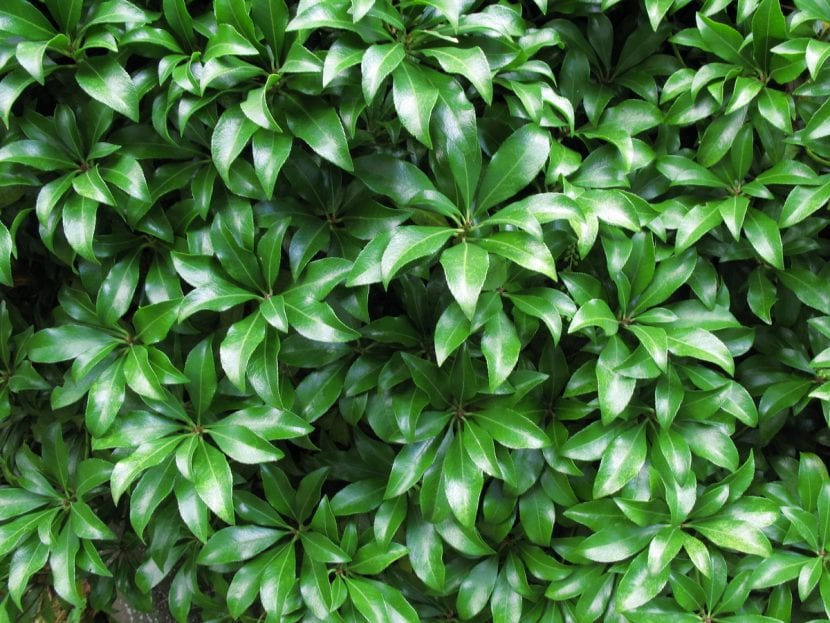
This is a plant that it is used only as an ornamental, either grown in pots or in gardens if the soil is suitable for it.
As an important fact that you should know, tell you that it should not be consumed under any circumstances, as it is poisonous both for humans and for other animals.
What do you think?